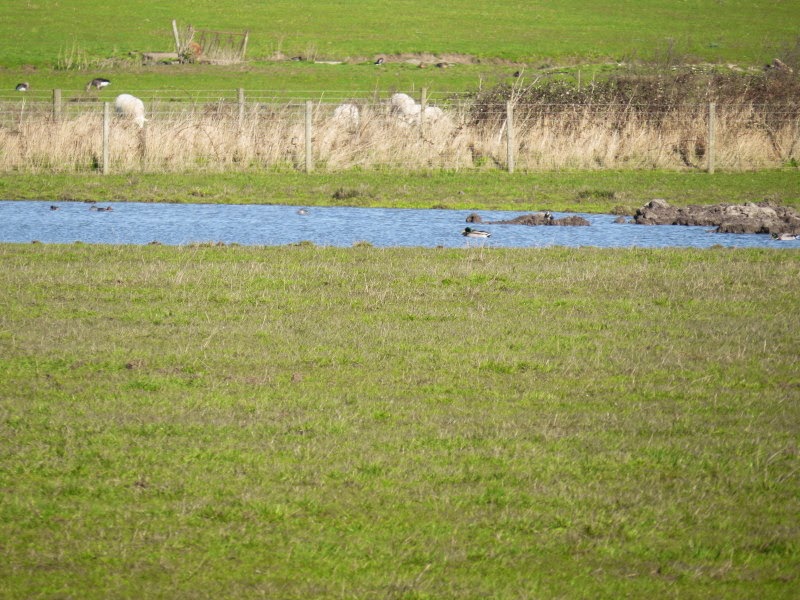It was therefore with a sense of anticipation that we set out, noting the light south-easterly breeze which would surely bring success.
A couple more Chiffchaffs were logged around Netherstead Farm, but as we approached the pool the sparsely cropped field adjacent to it failed to produce the hoped-for Wheatear. I did at least finally get a shot of a singing Skylark for the photo-year list.
 |
| 62. Skylark |
There were no other ducks on the pool, and soon there was no Green-winged Teal either as it took off and headed for the flashes.
Once we got there a quick scan revealed that the three Green Sandpipers had been joined by a Redshank, the first of the year.
 |
| 63. Redshank (being photo-bombed by the Green-winged Teal) |
We headed back without much of a plan. On the way I finally got the chance to add Green Woodpecker to the photo-list.
 |
| 64. Green Woodpecker |
Whatever it was, it's pretty.
Back at the cars we decided to drive to the church to try to get me a Blackcap for my year-list, and then head back to the flash to give Dave another chance at Little Ringed Plover.
The second part of this plan worked well, as an LRP was now present. We also noted a fourth Green Sandpiper. As we stood watching I heard Dave say, "what's this?", and then "Curlew!"
As I scanned hurriedly in the general direction, he unexpectedly ran back into the field. Evidently the Curlew had flown behind an Oak Tree and Dave expected it to reappear on our side of the hedge, which it did...apparently. Could I get on it? No chance. It started to drop, and then went out of sight. I know its just a Curlew, but this species, which used to breed here, is now quite tricky to see each year. The only realistic chance is March or April, and I may just have missed my opportunity. Bugger!
Back at the the car the Blackcap finally piped up, and I took some shots of Chiffchaff, of which this is the best.
The ups and downs of patch watching.






























